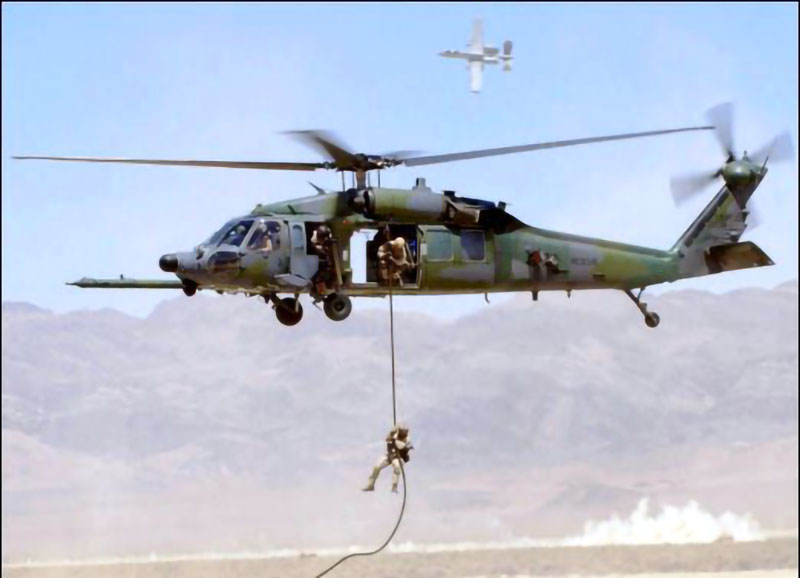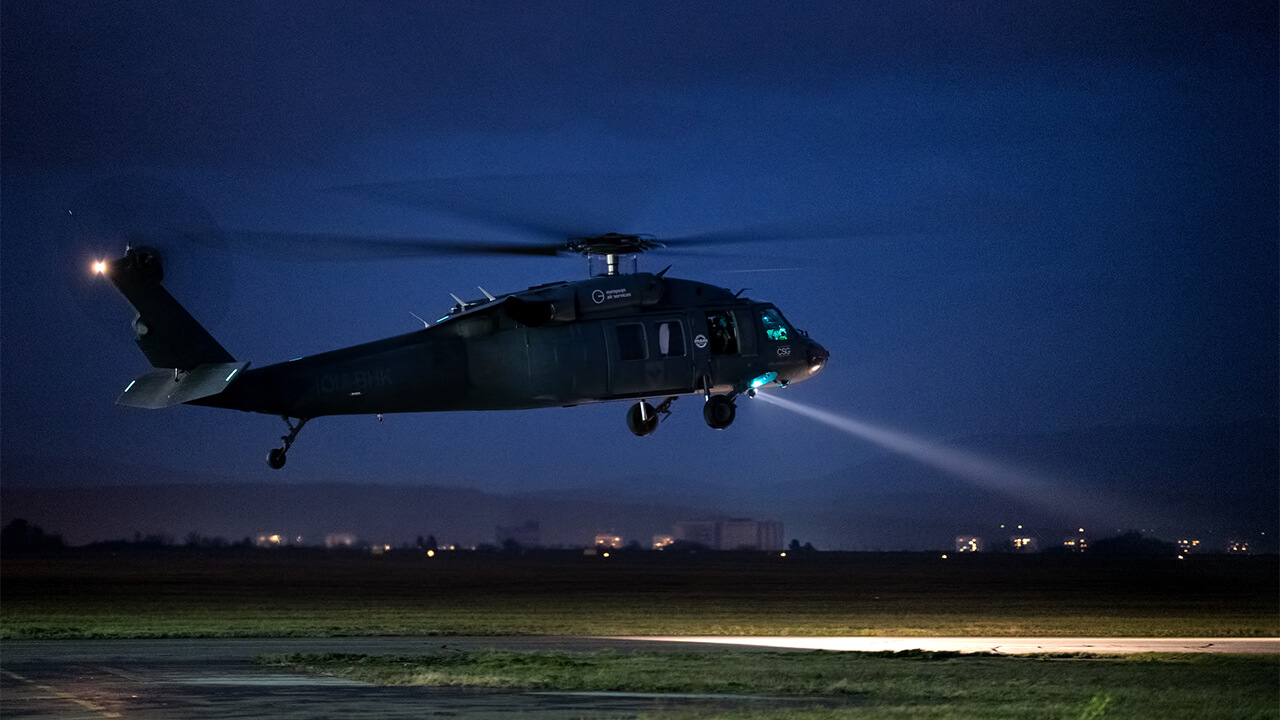Everything You Need to Know About the UH 60 Helicopter and Its Capabilities
Everything You Need to Know About the UH 60 Helicopter and Its Capabilities
Blog Article
Everything You Need to Find Out About the UH 60 Helicopter
The UH-60 helicopter, a keystone of U.S. Army air travel because its debut in 1979, represents an impressive mix of design and operational flexibility. As military demands progress, so as well does the helicopter, with ongoing developments aimed at boosting its abilities and incorporating contemporary innovations.
History of the UH-60
Created in the late 1970s, the UH-60 Black Hawk helicopter became a feedback to the U.S. Army's need for a versatile utility helicopter that might do a selection of objectives under challenging problems. The impetus for its style was the drawbacks recognized in the earlier helicopters made use of during the Vietnam Battle, particularly in terms of rate, survivability, and maneuverability.
The Black Hawk was designed by Sikorsky Aircraft, integrating sophisticated modern technologies and products to boost its performance and sturdiness. It was officially introduced into service in 1979, quickly becoming a critical possession for armed forces operations - uh 60. Its capacity to transfer troops, medical evacuation, and logistical assistance in both combat and altruistic objectives made the Black Hawk an important element of the united state Army's aeronautics fleet
Throughout the decades, the UH-60 has been continually updated, adjusting to the transforming nature of war and the developing demands of contemporary armed forces operations. Its operational history consists of engagement in major disputes, peacekeeping missions, and disaster alleviation efforts, strengthening its online reputation as a reliable and efficient helicopter in different settings worldwide.

Layout and Specifications
The style of the UH-60 Black Hawk helicopter regularly mirrors a commitment to functional efficiency and versatility. Developed by Sikorsky Aircraft, this medium-lift energy helicopter includes a streamlined, wind resistant body that improves rate and ability to move. Its tandem blades system, identified by 2 counter-rotating blades, reduces resonance and boosts lift ability, enabling more secure operations in diverse environments.
The UH-60 is powered by 2 T700-GE-701C turboshaft engines, providing a maximum rate of about 180 knots and a series of around 400 nautical miles. Its durable airframe is built from sophisticated composite materials, making certain sturdiness while keeping a fairly low weight. The helicopter has an optimum gross weight of regarding 22,000 extra pounds, sustaining a versatile payload setup.

Objectives and duties
A flexible system, the UH-60 Black Hawk helicopter serves a wide range of functions and missions within armed forces procedures. Made mostly for army transport, it can carrying approximately 11 soldiers, making it a vital property for fast release and logistical support.
In addition to army transport, the UH-60 masters medical discharge (MEDEVAC) goals, outfitted with advanced medical equipment to offer vital care throughout transportation. Its capacity to operate in diverse environments improves its performance in fight search and rescue (CSAR) operations, where quick removal of personnel is important.
The helicopter likewise plays a significant role in reconnaissance and security objectives, making use of onboard sensing units and equipment to collect intelligence. Its adaptability prolongs to logistical assistance, capable of carrying products and devices to forward operating bases.
In fight procedures, the UH-60 can be furnished with numerous weapon systems, allowing it to give close air assistance. Its multi-role ability makes the Black Hawk an essential device for modern-day military pressures, adapting seamlessly to the advancing demands of field of battle scenarios and guaranteeing goal success throughout a series of functional contexts.
Efficiency and Abilities
Recognized for its robust efficiency, the UH-60 Black Hawk helicopter boasts remarkable abilities that boost its functional efficiency throughout different missions. uh 60. This multi-role official statement aircraft is outfitted with effective twin-engine Turbomeca Arriel 1D1 engines, supplying remarkable speed and ability to move, with an optimum cruise ship speed of about 150 knots and a functional series of around 400 nautical miles
The Black Hawk's innovative avionics and fly-by-wire control systems dramatically boost trip safety and security and handling, enabling it to operate in varied settings, consisting of damaging climate condition. Its convenience is further exhibited by its ability to carry as much as 11 completely equipped soldiers or a haul of approximately 8,000 extra pounds, making it suitable for army transport, clinical emptying, and logistical assistance goals.
Additionally, the UH-60 is designed for survivability, featuring enhanced airframes, ballistic security for crew and passengers, and advanced countermeasure systems to escape dangers. The helicopter's dexterity and speed, combined with its ability for fast deployment, make it an important property in modern military procedures, making sure that it stays a crucial element of tactical air assistance and field of battle mobility.
Future Advancement

One considerable focus is the integration of innovative avionics systems, which will certainly enhance situational awareness via boosted navigation and interaction capacities. This consists of the potential usage news of expert system to assist pilots in decision-making and goal preparation.
In addition, future versions may include innovative products and style functions to bolster the helicopter's toughness and minimize its radar trademark, enhancing survivability in opposed settings.
The intro of hybrid-electric propulsion systems is likewise on the perspective, aiming to boost gas efficiency and reduce logistical problems. Such developments can expand functional array and lower the helicopter's ecological impact.

Conclusion
The UH-60 helicopter represents a significant innovation in armed forces air travel considering that its intro in 1979. The UH-60's enduring visibility emphasizes its vital duty in modern military operations and highlights the ongoing advancement of armed forces air travel innovation.
The UH-60 helicopter, a foundation of United state Military aviation given that its launching in 1979, stands for a remarkable blend of engineering and functional adaptability. As army requirements progress, so too does the helicopter, with continuous improvements aimed at boosting its capacities look at this now and integrating modern-day innovations.The layout of the UH-60 Black Hawk helicopter continually reflects a dedication to operational performance and convenience. Established by Sikorsky Aircraft, this medium-lift utility helicopter includes a sleek, wind resistant fuselage that improves rate and maneuverability.The UH-60 helicopter stands for a significant advancement in military air travel since its intro in 1979.
Report this page